Energy-efficient Optimization of Reorganization-Enabled Wireless Sensor Networks
Abstract
:1. Introduction
2. Target Tracking in Wireless Sensor Network
2.1. System architecture
2.2. Sensor node probability detection model
2.3. Observation and collaboration model
2.4. Sensor node energy consumption model
2.5. Linear target motion model
3. Optimal Strategies for Target Tracking Sensing
3.1. Target motion prediction phase
- 1)
- Initialize particles and importance weights.Particles are initialized to satisfy the prior distribution. Importance weights of the ith particle in the kth step prediction are initialized to bewhere Ns is the number of particles.
- 2)
- Update particles and importance weightsParticles are updated to bewhere i = 1, …, Ns; is the predicted target state of the ith particle in the kth step;F and G are defined in Section 2.5.With sensor node observations, importance weights are updated to bewhere p(·) and q(·) are both conditional probabilities.Then, importance weights should be normalized to be
- 3)
- Resample particlesIt is defined that efficient sample size is:where is derived from residual resampling. If Neff is less than the theoretical threshold, particles should be resampled with importance weights .
- 4)
- Update target stateWhere χk is the updated target state in the kth step.
3.2. Collaborative target localization phase
3.3. Recovery phase for tracking failure
- 1)
- GA_Cover. As we use GA to do global optimization instead of local optimization, the selected sensor nodes located inside the recovery area may not satisfy the coverage rate. In Figure 5, some selected sensor node located outside the recovery area provides a great coverage to the area. It also seems that the farther a sensor node is away from the edge of recovery area, the less it contributes to the coverage of the area. Thus, to simply adapt the recovery sensor node, we define an awakening area with the radius rawhere rr is the radius of the recovery area. It can be calculated as rr =va ·□t + εa; ρ is a adapting coefficient. It is relative to the parameters of the sensor node detection model and varies with sensor node locations.Sensor nodes located inside the awakening area are first awakened to detect the target. The GA Cover step could ensure a nearly maximal probability to recapture the target.
- 2)
- Complement. If the GA_Cover step still can't find the target, a Complement step is performed to cover the left area. This guarantees the maximal probability to find the target.
4. Experimental Results
4.1. Experimental setup
4.2. Vehicle tracking procedures
- All the sensor nodes located within the range of 24 m around the predicted target location are awakened to detect the target in each tracking period.
- Sensor node measurements are aggregated in a central sensor node. The central sensor node is selected from all the sensor nodes in the range of 24 m, which can minimize the communication energy.
- The range 24 m is the lower bound that the target can be located in each tracking period with the sensor node distribution and target trajectory shown in Figure 6.
4.3. Impact of localization error upper bound
4.4. Impact of sensor node observation deviation
5. Conclusions
Acknowledgments
References and Notes
- Wang, X.; Wang, S. Collaborative signal processing for target tracking in distributed wireless sensor networks. Journal of Parallel and Distributed Computing 2007, 67, 501–515. [Google Scholar]
- Zhao, F.; Shin, J.; Reich, J. Information-driven dynamic sensor collaboration for tracking applications. IEEE Signal Processing Magazine 2002, 19, 61–72. [Google Scholar]
- Winter, J.; Xu, Y.; Lee, W. C. Prediction based strategies for energy saving in object tracking sensor networks. IEEE International Conference on Mobile Data Management 2004, 346–357. [Google Scholar]
- Xu, Y.; Lee, W. C. On localized prediction for power efficient object tracking in sensor networks. The Proceedings of Distributed Computing Systems Workshops 2003, 434–439. [Google Scholar]
- Guo, Z.; Zhou, M.; Lev, Z. Optimal tracking interval for predictive tracking in wireless sensor network. IEEE Communications Letters 2005, 7, 438–449. [Google Scholar]
- Yeow, W.; Tham, C.; Wong, W. Energy Efficient Multiple Target Tracking in Wireless Sensor Networks. IEEE Transaction on Vehicular Technology 2007, 56, 918–928. [Google Scholar]
- Pahalawatta, P.; Pappas, T.; Katsaggelos, A. Optimal sensor selection for video-based target tracking in a wireless sensor network. Proceedings of the International Conference on Image Processing; 2004; 5, pp. 3073–3076. [Google Scholar]
- Wang, H.; Yao, K.; Estrin, D. Information-theoretic approaches for sensor selection and placement in sensor networks for target localization and tracking. Journal of Communications and Networks 2004, 36–45. [Google Scholar]
- Kaplan, L. Global node selection for localization in a distributed sensor network. IEEE Transactions on Aerospace and Electronic Systems 2006, 42, 113–135. [Google Scholar]
- Yang, L.; Feng, C.; Rozenblit, J. W. Adaptive tracking in distributed wireless sensor networks. Proceedings of the 13th Annual IEEE International Symposium and Workshop on Engineering of Computer Based Systems; 2006. [Google Scholar]
- Zhong, L. C..; Shah, R.; Guo, C. An ultra-low power and distributed access protocol for broadband wireless sensor networks. IEEE Broadband Wireless Summit 2001. [Google Scholar]
- Jung, E. S.; Vaidya, N. H. A power control MAC protocol for ad hoc networks. ACM Proceedings of the 8th Annual International Conference on Mobile Computing and Networking; 2002; pp. 36–47. [Google Scholar]
- Zou, Y.; Chakrabarty, K. Sensor deployment and target localization based on virtual forces. Proceedings of the IEEE INFOCOM 2003, 1293–1303. [Google Scholar]
- Li, S.; Xu, C.; Pan, W. Sensor deployment optimization for detecting maneuvering targets. Proceedings of the 7th International Conference on Information Fusion; 2005; pp. 1629–1635. [Google Scholar]
- Liu, J.; Koutsoukos, X.; Reich, J. Sensing field: coverage characterization in distributed sensor networks. IEEE International Conference on Acoustics, Speech, and Signal Processing; 2003; pp. 173–176. [Google Scholar]
- Fox, D.; Hightower, J.; Liao, L. Bayesian filtering for location estimation. IEEE Pervasive Computing 2003, 2, 24–33. [Google Scholar]
- Heinzelman, W. R.; Chandrakasan, A.; Balakrishnan, H. Energy-efficient communication protocol for wireless micro sensor networks. International Conference on System Sciences; 2000; pp. 1–10. [Google Scholar]
- Duh, F. B.; Lin, C. T. Tracking a maneuvering target using neural fuzzy network. IEEE Trans. Syst. , Man, and Cybernetics 2004, 34, 16–33. [Google Scholar]
- Merwe, R.; Doucet, A.; Freitas, N.; Wan, E. The unscented particle filter. In Department of Engineering; Cambridge University; Technical Report CUED/F-INFENG/TR 380; 2000. [Google Scholar]
- Gustafsson, F.; Gunnarsson, F.; Bergman, N. Particle filters for positioning, navigation and tracking. IEEE Transaction on Signal Processing 2002, 50, 425–437. [Google Scholar]
- Wang, X.; Wang, S. An improved particle filter for target tracking in sensor system. Sensors 2007, 7, 144–156. [Google Scholar]
- Vaswani, N. Bound on errors in particle filtering with incorrect model assumptions and its implication for change detection. IEEE International Conference on Acoustics, Speech, and Signal Processing; 2004; pp. 17–21. [Google Scholar]
- Ertin, E.; Fisher, J. W.; Lee, C. P. Maximum mutual information principle for dynamic sensor query problems. IPSN2003 2003, 405–416. [Google Scholar]
- Liu, J.; Reich, J.; Zhao, F. Collaborative in-network processing for target tracking. Journal on Applied Signal Processing 2003, 23, 378–391. [Google Scholar]
- Noto, M.; Sato, H. A method for the shortest path search by extended dijkstra algorithm. IEEE International Conference on Systems, Man, and Cybernetics 2000, 3, 2216–2320. [Google Scholar]
- Burne, R. A.; Buczak, A. L.; Jin, Y. C. A self-organizing, cooperative sensor network for remote surveillance: current result. Proceedings of SPIE 13th Annual International Symposium on AeroSense Conference; 1999; pp. 238–248. [Google Scholar]
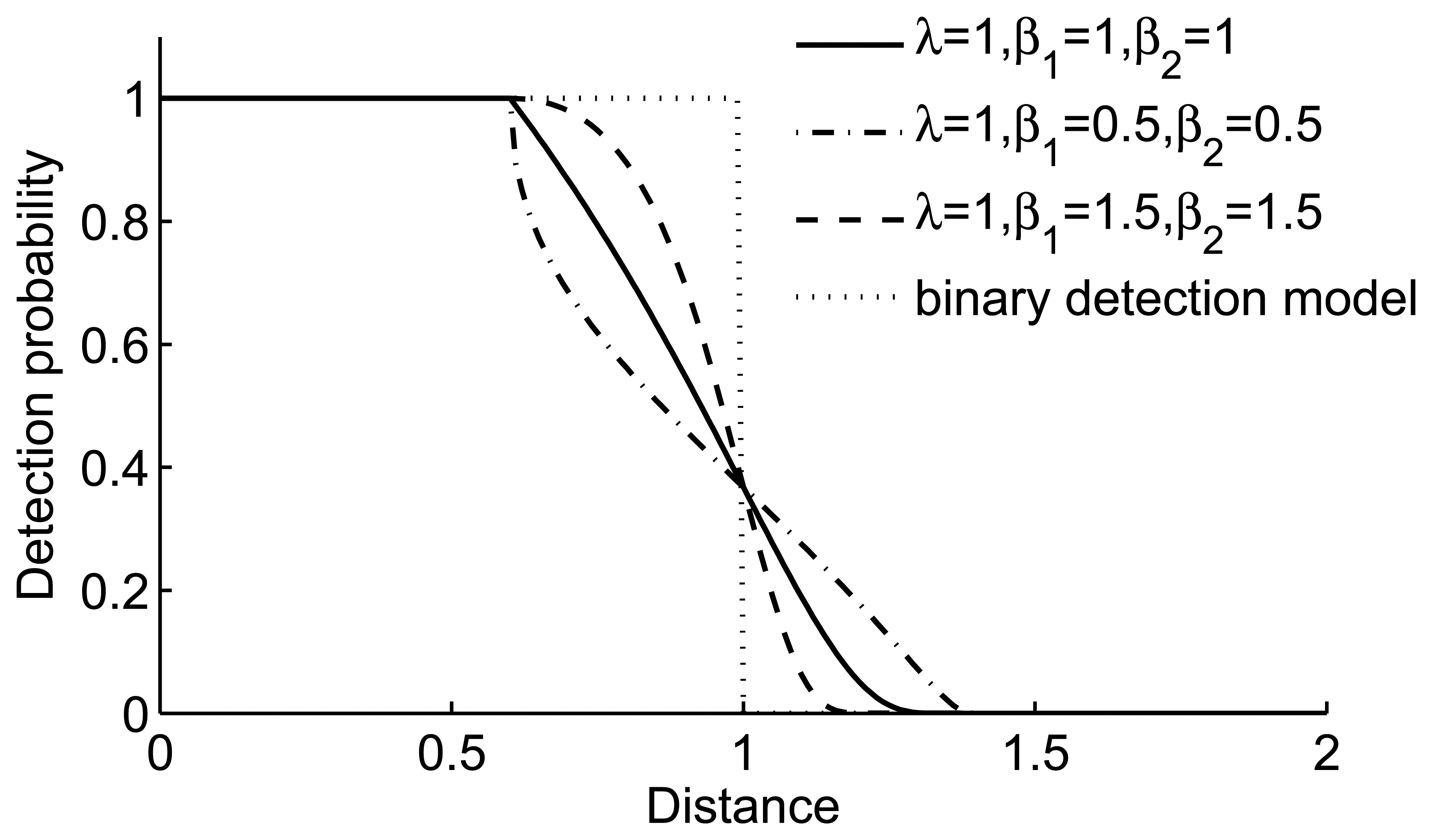


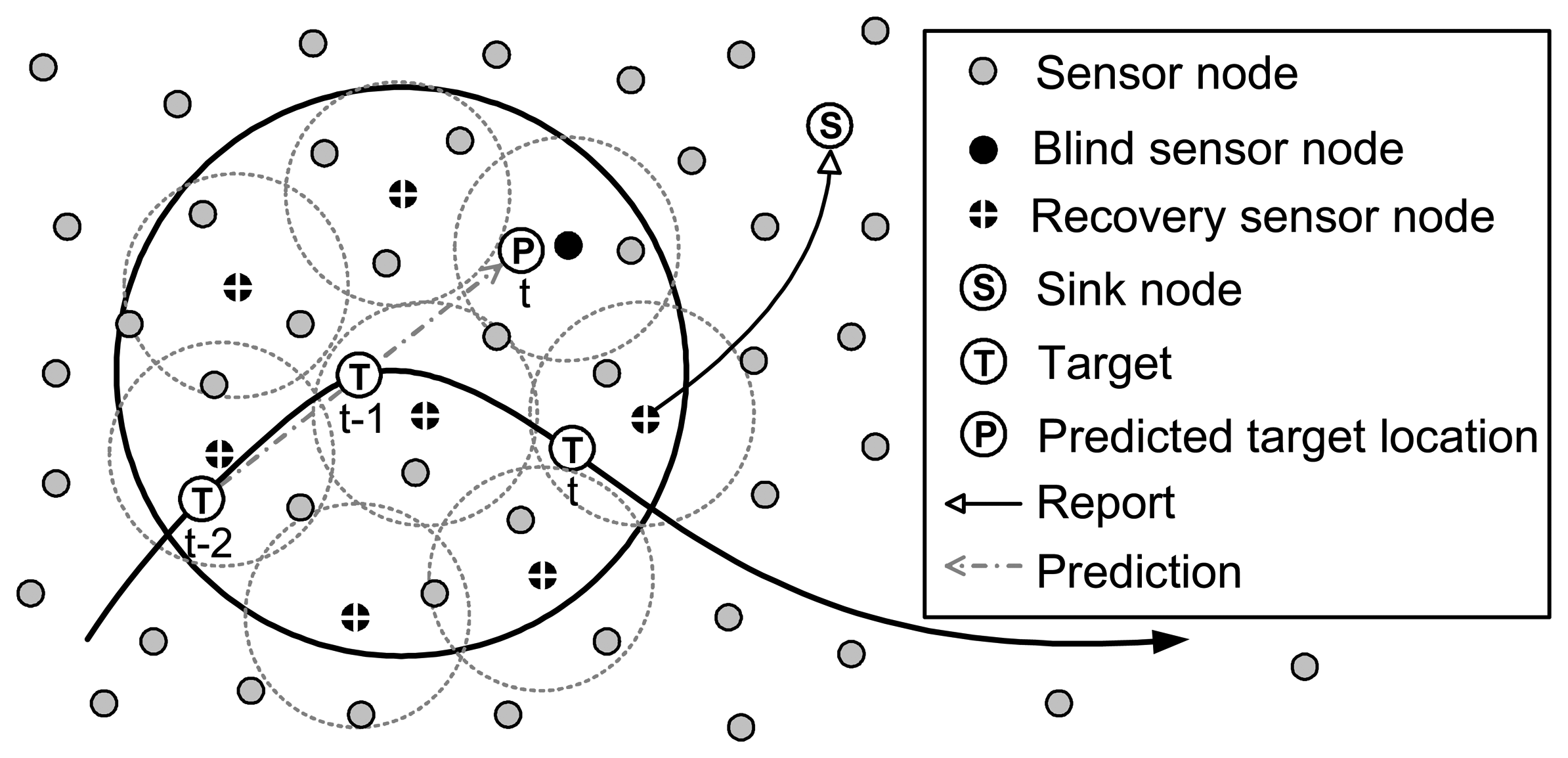
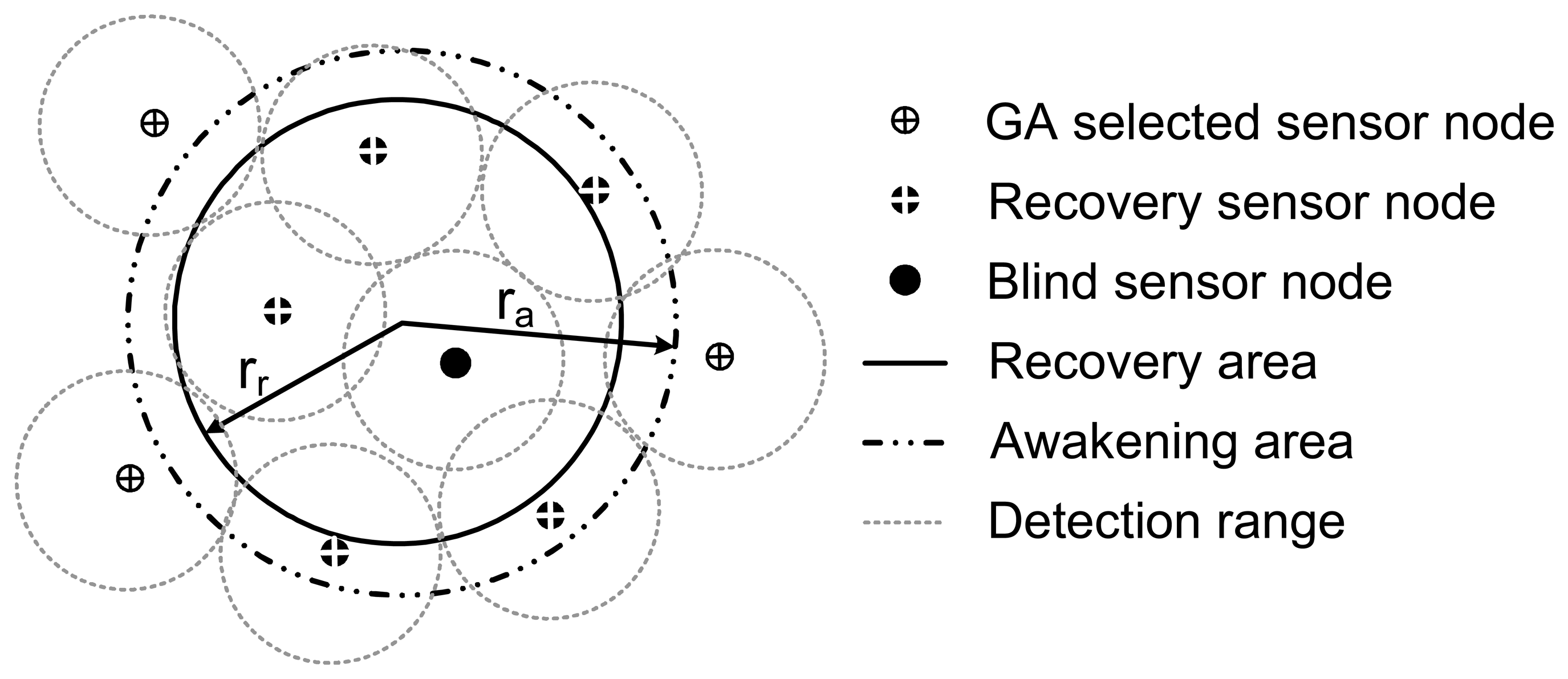
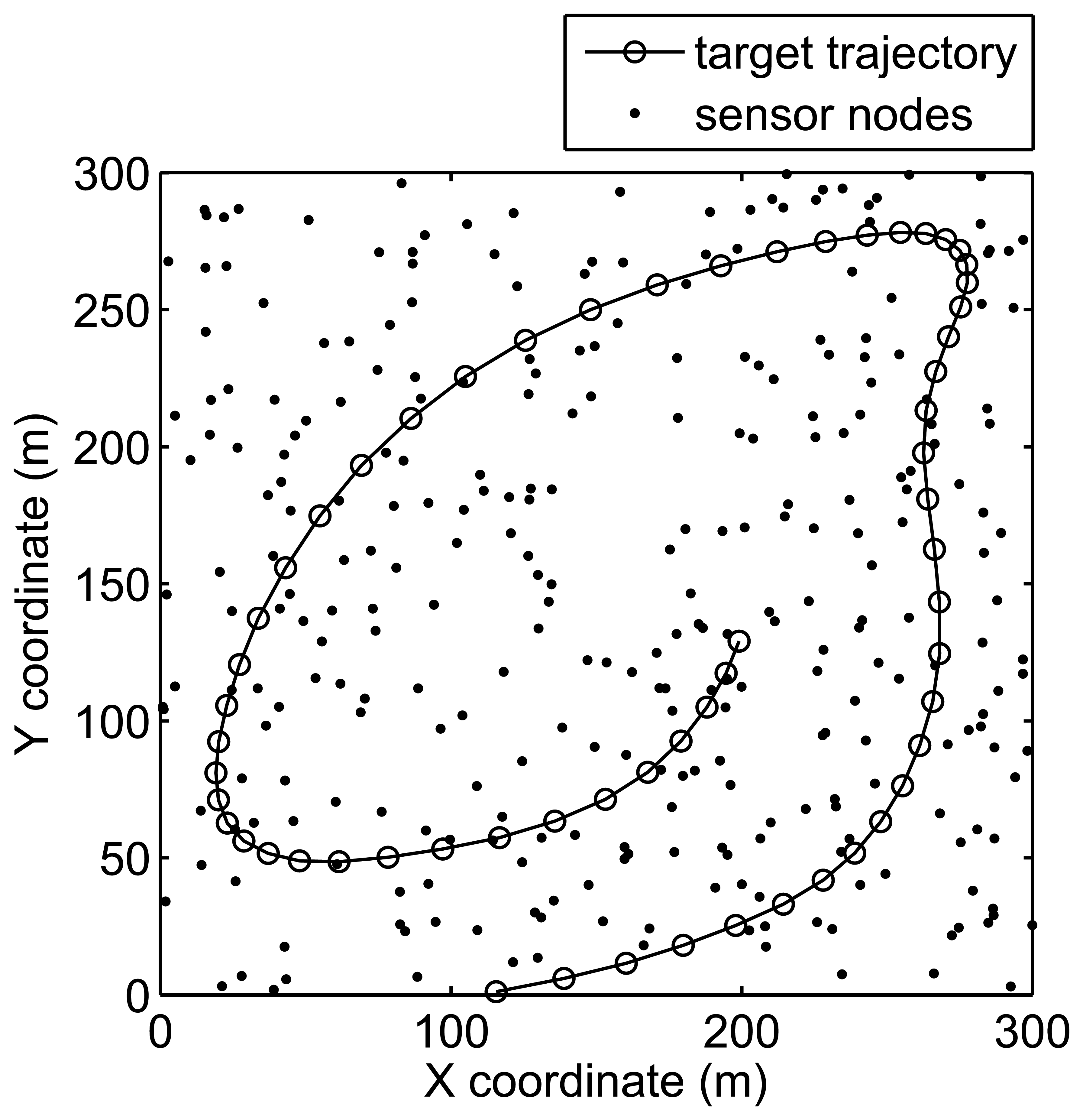
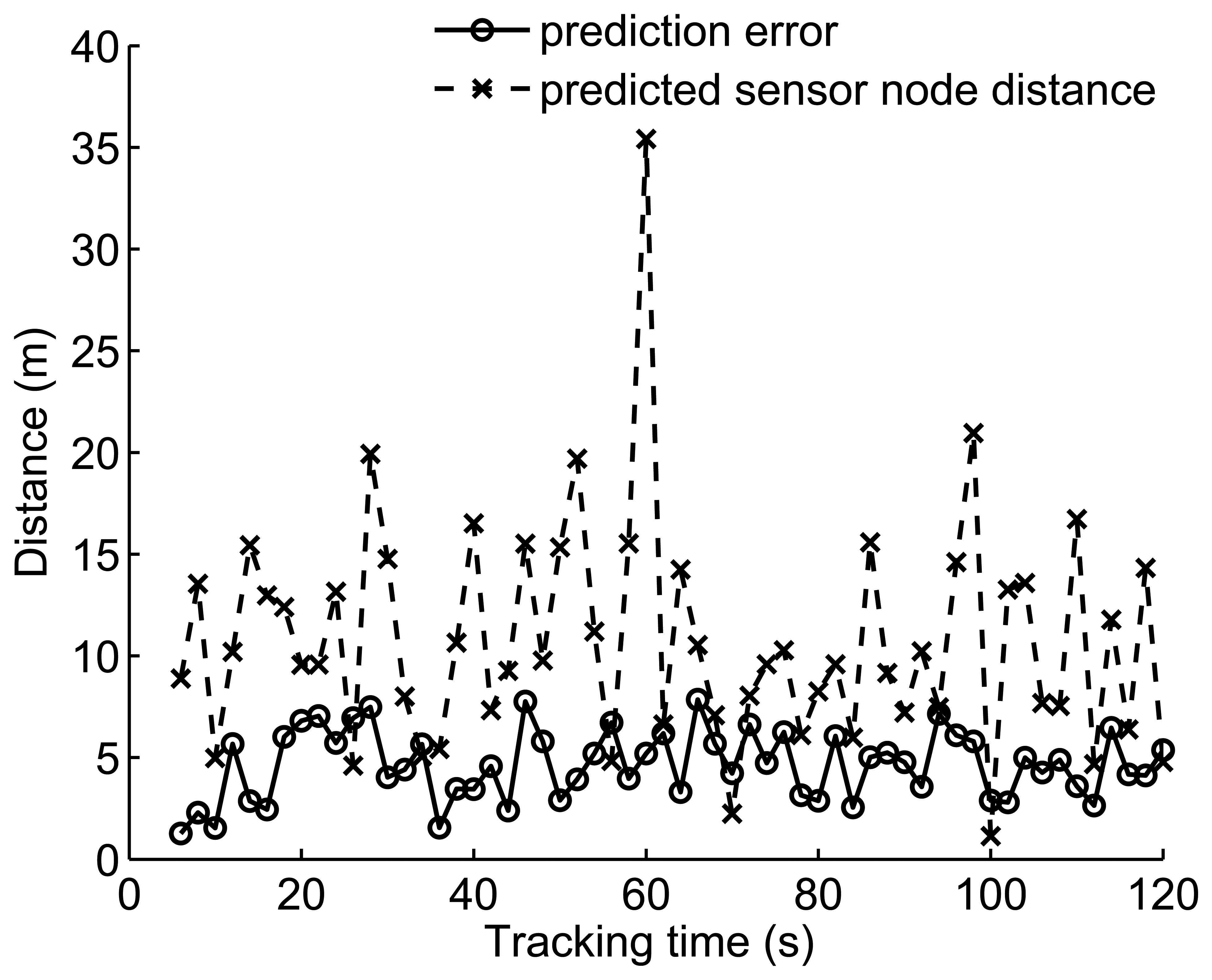

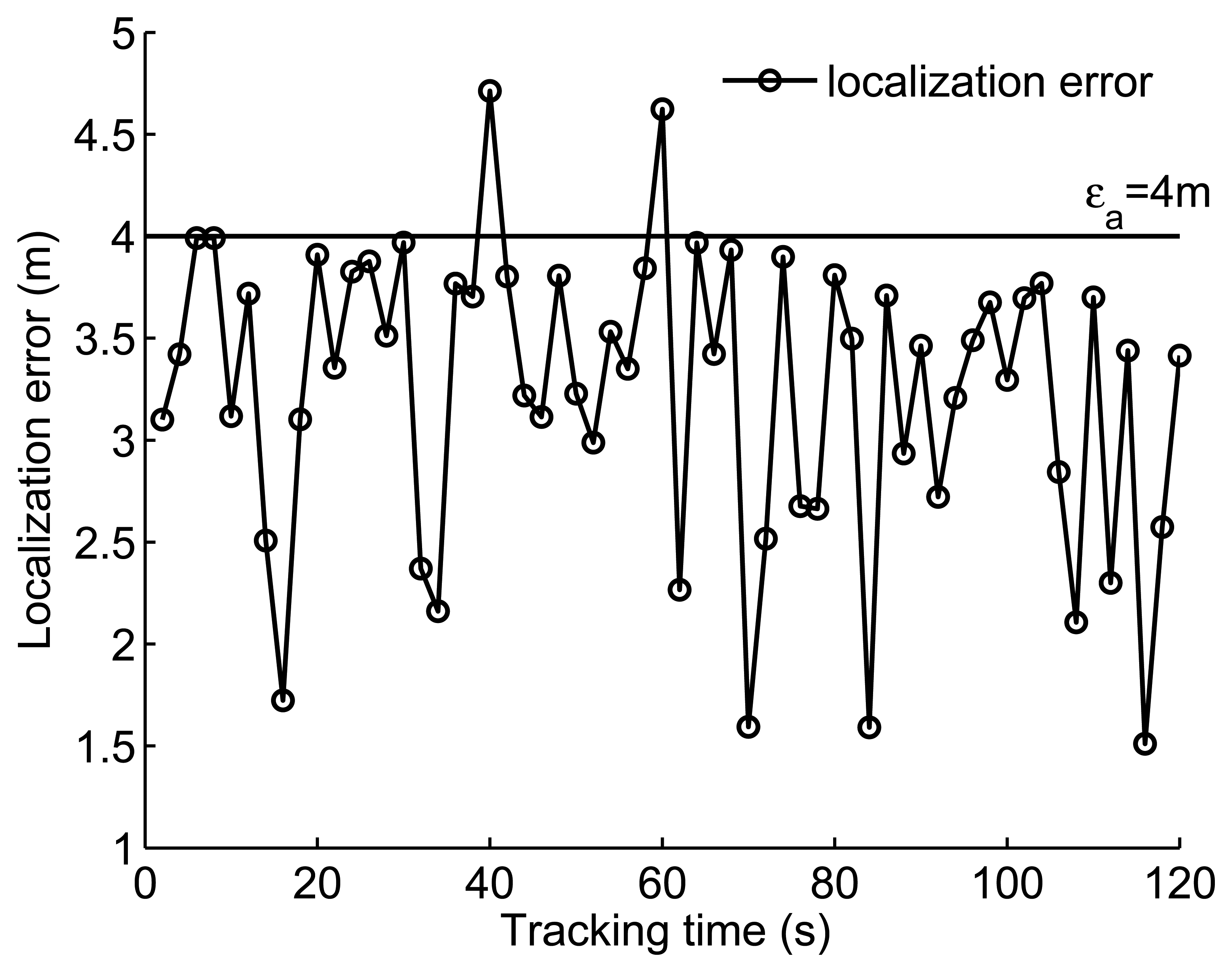
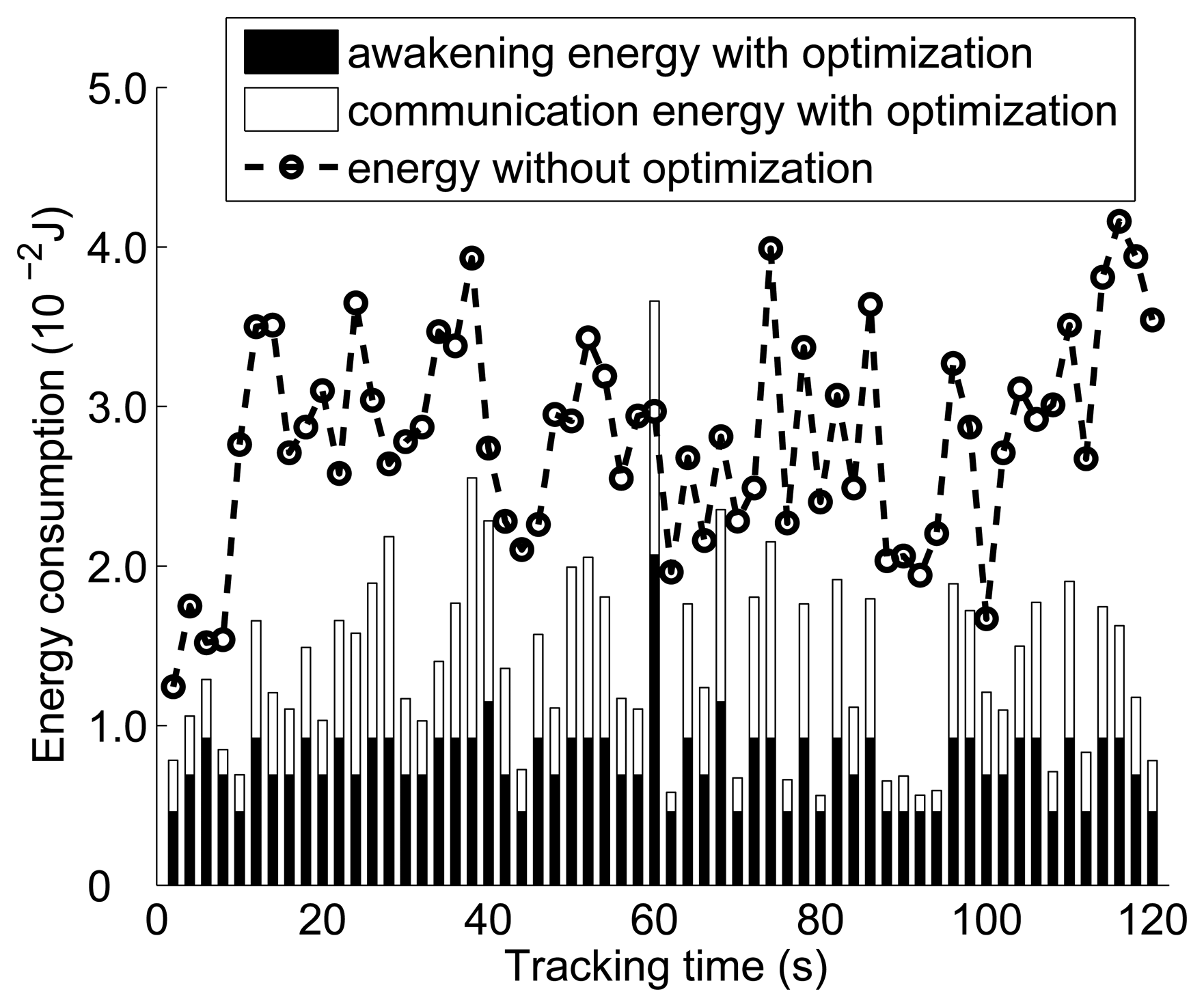
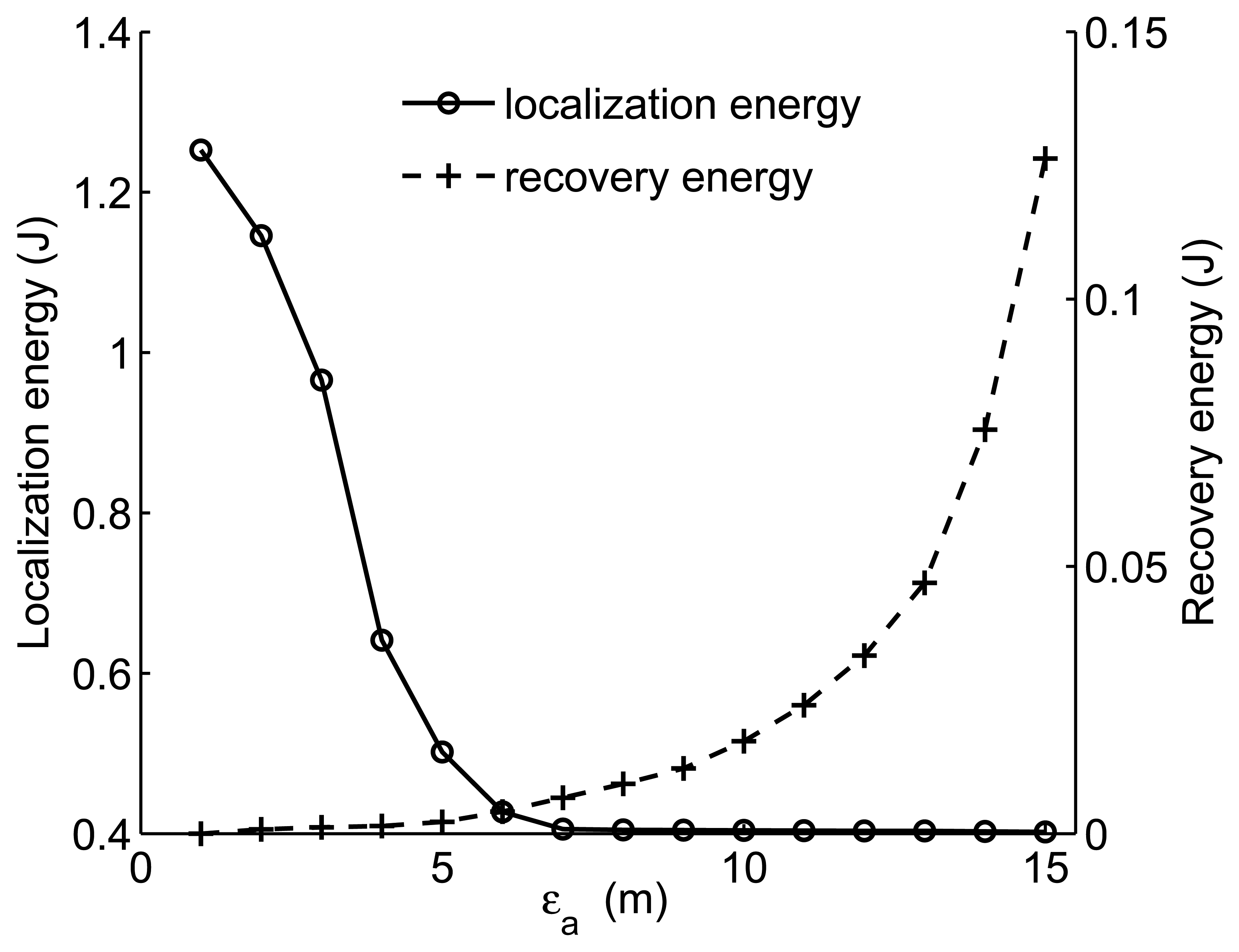
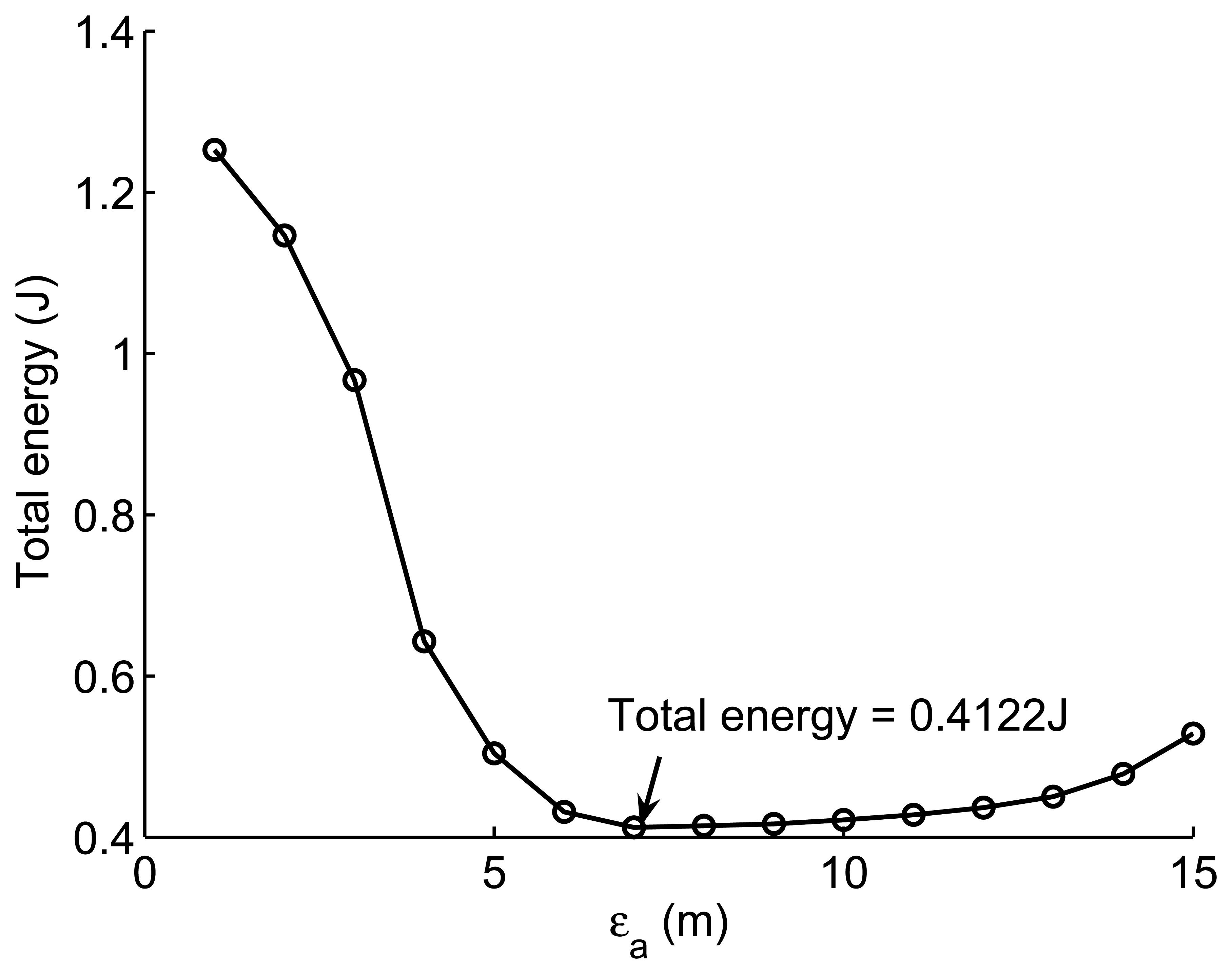
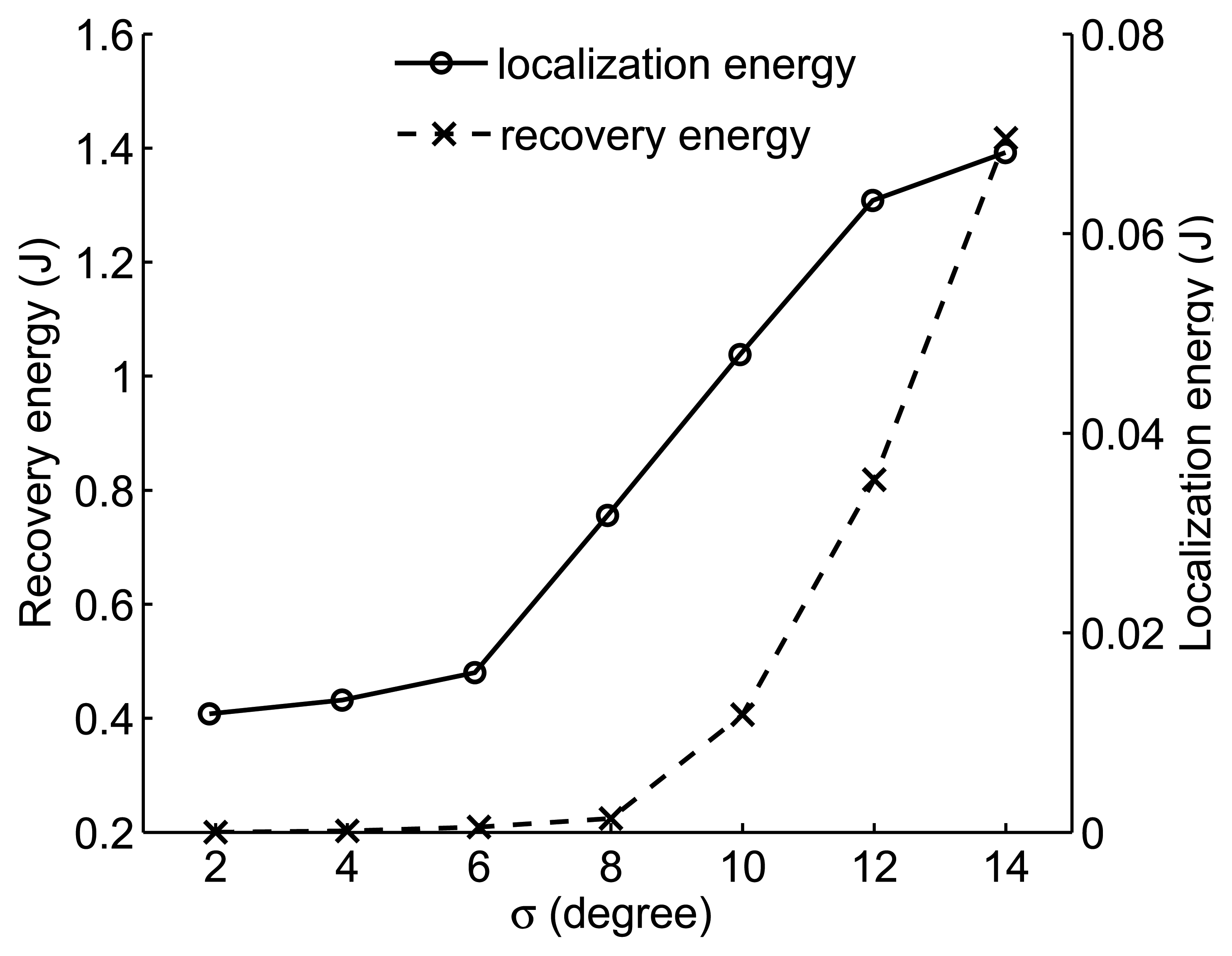
| Component | Mode | Energy consumption (mW) |
|---|---|---|
| Radio | Transmission | 35+PT |
| Radio | Receiving | 35+PR |
| Sensor | Active | 10 |
| MCU | Active | 20 |
| Parameters | Value |
|---|---|
| Transmitter circuitry (Ete) | 50nJ/bit |
| Transmit amplifier (εamp) | 100pJ/bit/m2 |
| Receiver circuitry (Ere) | 50nJ/bit |
© 2007 by MDPI ( http://www.mdpi.org). Reproduction is permitted for noncommercial purposes.
Share and Cite
Wang, X.; Ding, L.; Bi, D.-W.; Wang, S. Energy-efficient Optimization of Reorganization-Enabled Wireless Sensor Networks. Sensors 2007, 7, 1793-1816. https://doi.org/10.3390/s7091793
Wang X, Ding L, Bi D-W, Wang S. Energy-efficient Optimization of Reorganization-Enabled Wireless Sensor Networks. Sensors. 2007; 7(9):1793-1816. https://doi.org/10.3390/s7091793
Chicago/Turabian StyleWang, Xue, Liang Ding, Dao-Wei Bi, and Sheng Wang. 2007. "Energy-efficient Optimization of Reorganization-Enabled Wireless Sensor Networks" Sensors 7, no. 9: 1793-1816. https://doi.org/10.3390/s7091793




